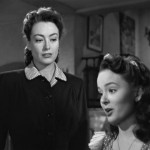HBO’s “Mildred Pierce” mini-series, directed by Todd Haynes and based on James M. Cain’s 1941 novel, starts this Sunday.
In director Michael Curtiz’s 1945 movie version of the book, Joan Crawford won the Oscar for her portrayal of the title role in the ultimate story of a self-sacrificing mother and her ungrateful child, Veda (Ann Blyth). Mildred’s hard-earned success as a restaurateur allows her to support not only her family but also her aristocratic and cash-poor love interest Monty Beragon (Zachary Scott).
In Haynes’ mini-series, Kate Winslet stars as Mildred, Guy Pearce plays Monty and two actresses share the Veda role: Morgan Turner as the girl and Evan Rachel Wood as the young woman. Haynes and Jon Raymond wrote the teleplay.
In many ways, the series, which follows the book more faithfully than the 1945 movie and covers nearly 10 ten years in the characters’ lives, is a delight to watch. Depression-era Southern California is beautifully recreated and shot by Edward Lachman. Carter Burwell’s original music is spot-on as is Ann Roth’s costume design. And the acting is excellent, particularly the leads.
Whereas Crawford’s Mildred is stoic and dignified, Winslet’s is sensitive, wistful, often tentative and unsure of herself. Her expressive features suggest her mounting anger, guilt and desperation as her business grows but her relationships deteriorate.
Early on in the series, Winslet’s Mildred identifies in her daughter a “pride or nobility I thought I had” and we glimpse the complexity and closeness of her bond with Veda. The mother-daughter relationship in Haynes’ five-hour version is perhaps more nuanced than in Curtiz’s film.
Pearce easily inhabits the playboy scoundrel Monty and Wood sizzles as the junior miss femme fatale. As the story unfolds, we learn that Mildred and Veda also have very similar taste in men. This year’s supporting actress Oscar winner Melissa Leo and Mare Winningham are quite good as Mildred’s friends.
A disappointment, however, is James LeGros’ insipid performance as Pierce family “friend” Wally Burgan. In Curtiz’s version, the role as played by Jack Carson – conniving and sly, but charming – was one of the movie’s many strengths.
Another downside is the pacing, which is far too slow. It would have benefited from shaving about an hour, especially in the beginning. But then if Haynes’ aim was to be true to every page of the book, he has succeeded.
I prefer Curtiz’s original because it is canonical film noir, in tone, look and story. Granted, Cain’s book was altered because in 1940s Hollywood, immorality was never allowed to triumph. Instead of the evil-doers leaving California to begin a new life in New York, one is fatally shot and the other eventually is punished. The murder sets the story, told via flashback, in motion and lends an edgy suspense.
Still, Haynes did not set out to make a noir; apparently his aim is to explore the subtext and subtleties in Cain’s novel. Cain was, arguably, sympathetic toward his feisty protagonist (what choice does she have but to establish independence and security, given the weak and deceitful men she has to choose from?). But she pays a dreadful price for doing so and the book decries materialism, the class system and social climbing. As for Cain’s ultimate take on Mildred’s power, in Hayne’s work, there is fodder for both sides of the argument.
Warner Bros. image of 1945 “Mildred Pierce”











From FNB readers